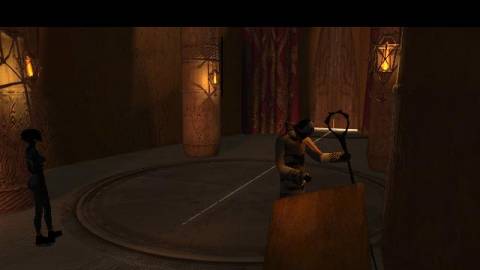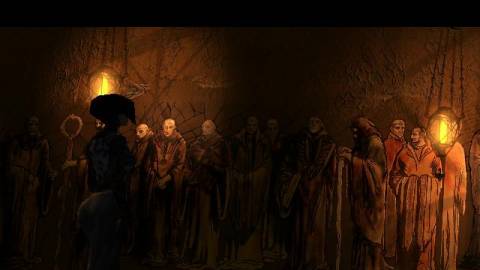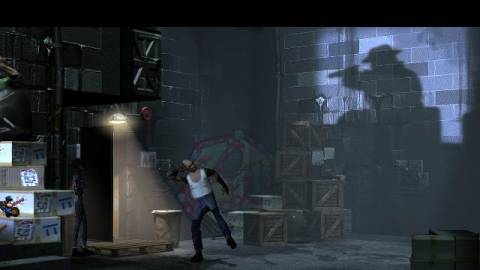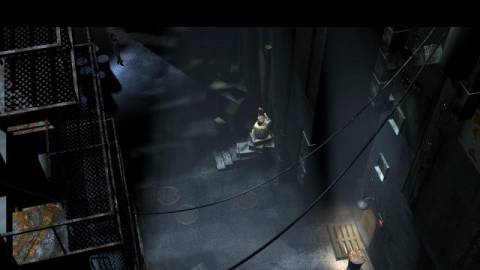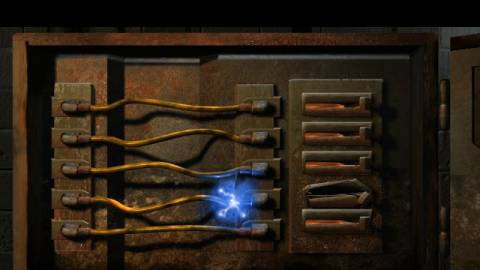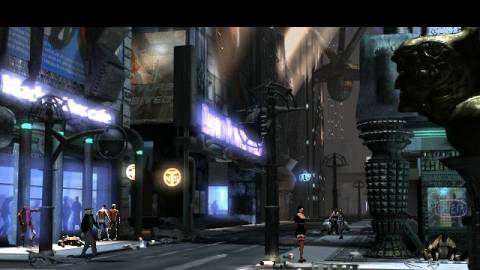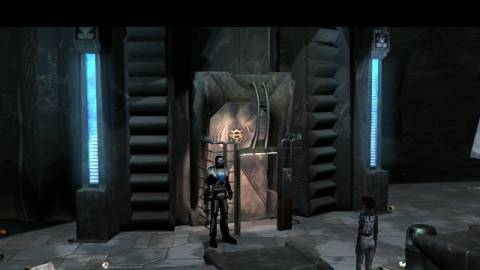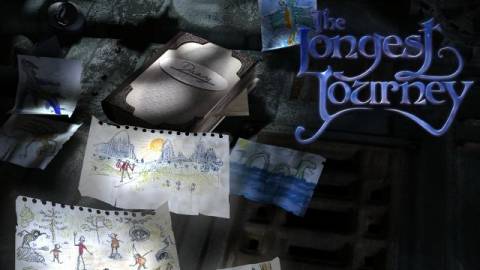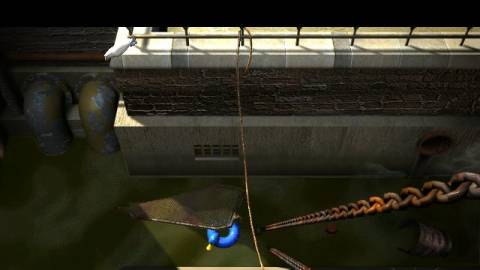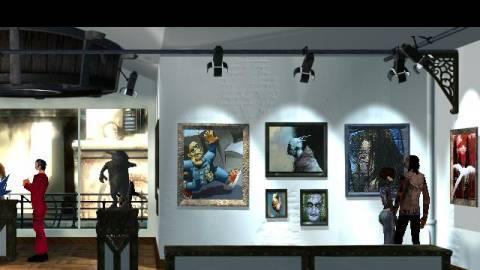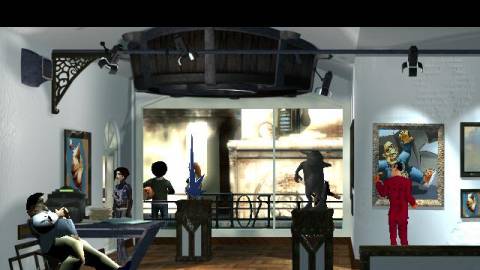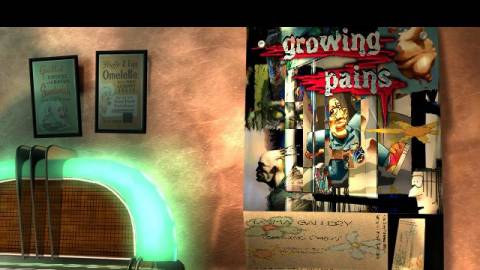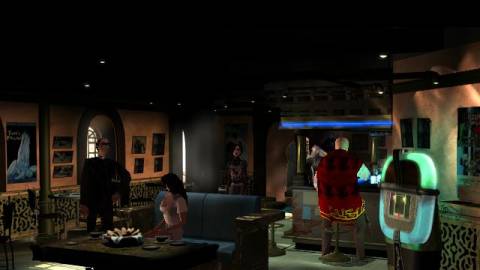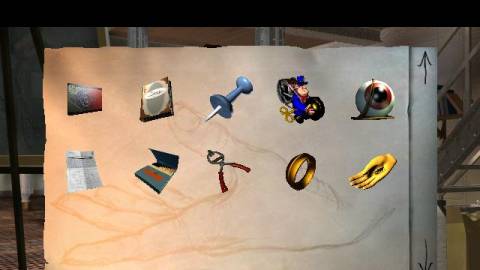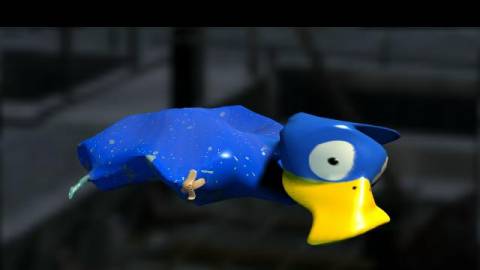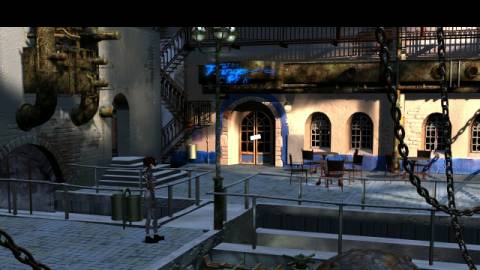Overview
The Longest Journey is a classic point-and-click adventure game in the vein of Sierra 's King's Quest or Leisure Suit Larry games. Controlled from a static third-person perspective, the player uses a mouse cursor to direct protagonist April Ryan around large environments, collect items, interact with other characters, and circumvent various obstacles by solving challenging and occasionally obtuse puzzles. The game won several awards for its extensive dialogue, deep and believable characters, excellent voice acting, and mature storyline.
Story
The year is 2209, and April Ryan is a young art student living out on her own for the first time. She's desperately poor, scratching out a meager paycheck at a trendy coffee shop to cover the rent and devoting all her free time to earning her scholarship, but she loves it anyhow; she's already made a couple great friends and has bright plans for the future.

Lately, however, she's been troubled by strange and incredibly vivid dreams of a foreign land inhabited by strange creatures and a howling black vortex that threatens to devour her just as she jolts herself awake. April tries to dismiss these visions as simple nightmares and keeps them to herself. Nevertheless, a cryptic stranger named Cortez seems to know all about them, and when the supernatural beings from her dreams start manifesting themselves to other people in April's life, she decides to seek out whatever help he has to offer. Cortez reveals that these apparitions are not hallucinations but real beings from a parallel dimension which are starting to leak through the barrier between the two worlds. He also informs April that it's her destiny to uncover the cause and gently coaxes her into stepping through a shift to enter the alternate realm.
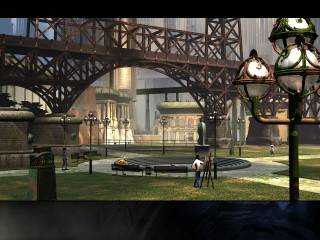
On the other side, April is greeted by Vestrum Tobias Grensret, a sort of priest who helps preserve knowledge of the twin dimensions and the delicate Balance which maintains the Divide between them. His world is called Arcadia, a world inhabited by many intelligent non-human races and where physical laws are frequently broken by feats of magic and alchemy. April's world of science and logic is known as Stark, and Vestrum Tobias explains to her the legend of how a single unified Earth came to be split into two separate dimensions. Unfortunately that Divide is breaking down, allowing elements from one world to begin polluting the other, and only a born cross-dimensional shifter like April can save both worlds by restoring the Balance between them.

April's quest leads her on a winding journey through both the technologically advanced Stark and the fantastical world of Arcadia, meeting a variety of distinctive characters and uncovering a lot about their lives and cultures along the way. Sadly, April also discovers that her path is also leading away from the life of school and friends she was just starting to build for herself, and struggles with the realization that she has to sacrifice so everyone she cares about can survive.
Presentation
Characters in The Longest Journey appear as animated 3D models against static, hand-drawn 2D backgrounds, similar to the style of Square's Final Fantasy VII.

There are dozens of hours worth of dialogue in the game, and not just from the other characters. April Ryan offers an oral description for virtually every noteworthy object in the game, from reading notes aloud to making an observation about a nondescript bystander on the edge of a scene. This offers players a lot of feedback about the environment which can be very useful in solving the game's many puzzles and helps make April feel like a distinct character in her own right rather than just an extension of the player.
This is further aided by the way the entire first chapter is practically devoted to exploring her life. Where many games serve up heroes whose sole purpose in life is to embark on great adventures, The Longest Journey quickly establishes the sense that April is an optimistic young woman with her own life and that she wasn't really looking to have it all turned upside down by some special destiny. The same holds true for many of the major characters: they might be standing still on screen, but there's so much personality inherent in their dialogue that they create the illusion of leading full and interesting lives.
Trivia
The Longest Journey includes an unlockable feature called "The Book of Secrets" which includes concept art from the development of the game, unused music, and bloopers from the voice recording sessions. This material becomes available to anyone who completes the game, but can be revealed earlier to players to take the "organic plastic leaf" from the plant outside April's bedroom and place it in the flower bed outside Abnaxus' tree. Players who unlock the features early should be forewarned that some of these pictures and audio clips contain spoilers of events late in the game.
References
During the game there are many references to popular culture of 20th century. Some of these are listed here:
- Death Star. This is a nickname of a large black sphere near Aprils painting in Art School. Examining it further will cause her to exclaim "Let's blow this thing and go home!". This is a reference to Star Wars.
- MacGyver. When April uses piece of mirror on a laser beam, she says "I saw this on an episode of MacGyver 2200". MacGyver 2200 is apparently sequel to a popular 20th century TV series called MacGyver, where the main character Agnus MacGyver uses everyday objects and his scientific knowledge to get out of tight spots.
- Tuvok. April calls a certain dark-skinned, pointy-eared man in the police station "Tuvok" after the vulcan security officer from the TV series Star Trek: Voyager.
- Richard III. April says, that Roper Klacks sounds like Richard III on crack. Richard III was King of England in 15th century. There is also a play by William Shakespeare about his life named after himself.
- Treasure Island. When April is on a ship heading towards Alais, there is a apple barrel on deck of that ship. If player uses mouth icon on barrel, April asks "Jim?", which is a reference to the book "Treasure Island" by Robert Louis Stevenson. Main character in that book is Jim Hawkins, a boy, who, being hidden in a apple barrel on another ship, heard about pirates plan to mutiny.
- The force. When April wants to jinx the magic compass on the ship on the course away from Alais, she says "Use the force, April". This is a direct reference to concept from Star Wars saga.
- There are some well known books on old woman's bookshelves, that April mentions. The books are following:
- "Moby Dick", by Herman Melville.
- "Oliver Twist", by Charles Dickens.
- "The World According to Garp", by John Irving.
- "Zen and the Art of Motorcycle Maintenance", by Robert M. Pirsig.
- "The Holy Bible", by multiple authors.
- Cannabis t-shirt. Stereotypical black man with an afro is wearing a t-shirt with cannabis leaf picture on it. Man can be seen talking to a woman, who registers people to become colonists.
- Dark Side. April talks to the woman, who registers soon-to-be colonist, and asks "How does it feel working for the Dark Side?". This is a second reference to Star Wars.
- Solitaire. April notes on guards room on the colony, that somebody is playing solitaire (on a computer). Playing Solitaire is a known activity for bored office workers, who have to sit behind computer with Windows operating system all day.
- The X-Files. When talking to Minnelli in the police locker room, April can claim to be Agent Scully of the FBI from The X-Files.
- Syd Barrett (former Pink Floyd bandleader). A painting of Syd Barrett can be seen on the wall in the room where April is working on her piece at the Vava art school.
Soundtrack
The Longest Journey has an original soundtrack with two different versions: an online version (192kbps mp3s) and a CD version. The online version contains 36 songs. The CD version has only 30 tracks, but one of those tracks is not available through the website. The track order varies, but is mostly the same.
The first 32 tracks are composed by Bjørn Arve Lagim, and the last 4 by Tor Linløkken for the jukebox in The Fringe Café.
Tracks (Online Version)
- Main Menu
- Prologue
- Main Titles
- White Dragon's Lair
- Venice
- The First Shift
- Marcuria and the Northlands
- The Gribbler
- The Subway and Hope Street
- The Great Library
- Reading Music
- The Gargoyle and the Labyrinth
- The Storm and the Sea
- Alais
- The Alatien
- Inside the Ancient City
- The Deep and the Old God
- A Ship of Shadows
- The House of All Worlds
- Gordon Halloway
- Death and Rebirth
- Jacob MacAllen
- Danger
- Into the Wormhole
- Desolation and the Well of Making
- The Ghost House
- The Tower
- The Road Back
- Epilogue
- End Credits
- Prelude in C Minor
- Winterland
- Dragon
- Dolphin
- Eagle
- Shark
Tracks (CD Version)
- Main Menu
- Prologue
- Main Titles
- Venice
- The First Shift
- Marcuria and the Northlands
- The Gribbler
- The Subway and Hope Street
- The Great Library
- Reading Music
- The Gargoyle and the Labyrinth
- The Storm and the Sea
- Alais
- Inside the Ancient City
- The Deep and the Old God
- The House of All Worlds
- Jacob MacAllen
- Death and Rebirth
- Danger
- Into the Wormhole
- Desolation and the Well of Making
- The Ghost House
- The Tower
- Epilogue
- End Credits
- The Longest Journey Suite
- Dragon
- Eagle
- Dolphin
- Unicorn *
* Same as "Shark."

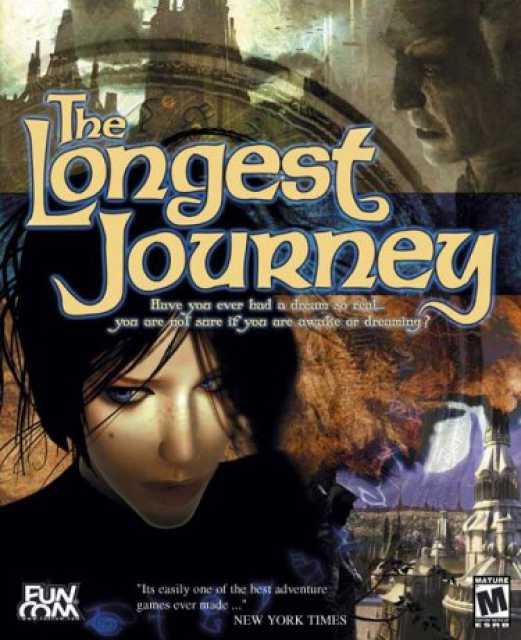
 PC
PC iPhone
iPhone iPad
iPad




